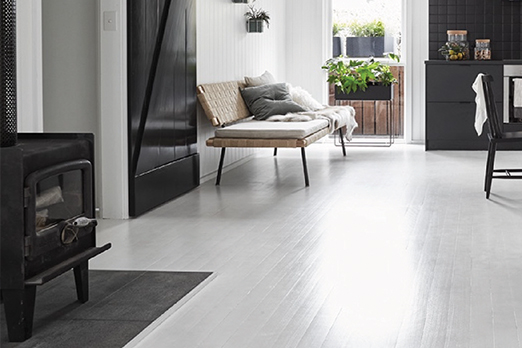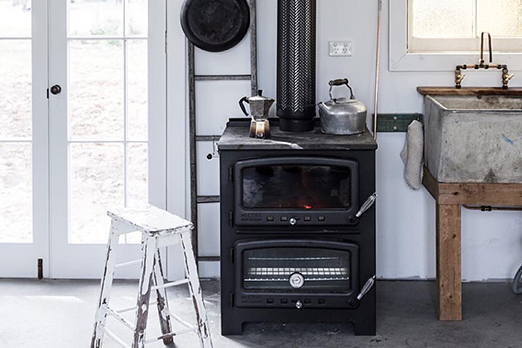
Frequently Asked Questions
Have a question? You’ll find answers to the most frequently asked questions about Nectre fireplaces here.
Immediately shut down any air intake devices on your heater and let the fire burn out. DO NOT use the appliance until you have had it inspected by an accredited installation / service person.
All Nectre parts can be purchased through the Web Shop by simply clicking on Spare Parts on this website or can be ordered through your local Nectre dealer. To locate your nearest dealer please go to nectre.com and click on Where to Buy Nectre.
The integrity of the firebox is covered by a 10 year warranty. Generally the excluded items include firebricks, baffle plates, brick retainers, door glass, door and glass seals etc.
The baffle plate is a removable steel plate inside the top of the firebox that elongates the flame path to retain the heat in the firebox. Take it out, straighten as best you can, turn it over and refit it. It’s time to replace it as soon as a hole appears in it. Check annually.
Firstly, rust can only appear if there is moisture present. If there is a leak in your flue flashing, have it fixed. Obtain a ‘’fine’’ sponge sanding block from your local hardware outlet. Sand back affected areas, dust off thoroughly then paint with Stove Bright – Metallic Black paint which will be available through your local Nectre dealer.
The firebricks are 40mm thick (N60 25mm thick) and only need to be replaced if they have disintegrated and are exposing the walls of the firebox. They do not need to be replaced if they have cracks in them providing they stay in place. The firebricks not only protect the sides of the firebox but also increase the thermal mass and the internal temperatures of the firebox creating a cleaner burn.
All heaters are individually tested for clearances to combustible materials in accordance with Australia/New Zealand Standard 2918. These clearances are the minimum clearances you can install your heater from a combustible wall. The installation instructions containing these clearances can be downloaded from our website.
If you have a black, sticky tar build up (creosote) on your glass it’s a sign that you are burning your fire on a low air intake setting for extended periods of time and/or the wood you are burning has a high moisture content (over 20%) and hasn’t been seasoned for long enough.
If creosote is present you’ll need to remove it with a glass scraper or similar. If you only have a smoky build up on the glass try products like Windex or even try some damp newspaper dipped in the ash and rub the glass. This method was popular in the early days of combustion heaters and cookers.
No, it is a good idea to leave approximately 20mm ash in the bottom of your firebox as the fire will burn better on a bed of ash than on a flat clean surface. It will also assist in protecting the base of the firebox.
Radiant Heaters (Nectre Mk 1 & Nectre 15):-
A radiant heater does not have any outer casings on the firebox except for a rear heatshield. All of the steel you on the outside of the heater is the steel of the firebox. A radiant heater will heat the objects in the room in a straight line from the heater, like an electric bar radiator. Radiant heaters are ideal for rooms with high ceilings and used in conjunction with a ceiling fan is a very effective method of heating. A radiant heater will require a larger clearance to the sides than a convection style heater.
Radiant / Convection Heater ( Nectre Mk11, Nectre Mk111, Nectre Mega, Nectre N60, Nectre Inbuilt):-
A radiant/convection heater will emit radiant heat from the front of the heater and the lower top, front step but has a convection chamber built into the sides and rear of the appliance which allows for the addition of a fan to increase the speed of this convection air. The side clearances are also reduced because of these air gaps. A natural convection is created through this chamber depending on the burn rate of the fire but an optional fan can be added to increase the speed of this air movement. No fan available for the N60.
Most heaters in Australia are tested and designed to burn hardwood and you should find a sticker on your heater stating that. Ideally you should only burn wood that has been cut down for at least 12 – 18 months prior to burning. It should be kept in a dry, sheltered area, up off the ground. It should have a moisture content no greater than 20%. If you burn wet or unseasoned timber you will create a creosote deposits in your heater and flue system reducing the performance of your heater. Running your heater with the air intake controls closed down for long periods can also result in a similar creosote issue. Hardwoods will generally give you’re a longer burn time and greater heat.
Check the flue for any creosote/soot build up on the inside of the flue pipe. This can be done by removing the baffle plate/s inside the top of the firebox and checking the flue with a mirror and a torch. Clean if necessary with a flue brush or engage a chimney sweep.
Check that the door and glass seals are in good condition. Replacement seals will be available through your local Nectre dealer.
Replace any firebricks that may have deteriorated and exposed the steel firebox.
Check baffle plate/s for soundness and replace if necessary (see above).
Yes, you can cook on the top of any of the Nectre range except the Inbuilt. The top of the Nectre 15 and the lower, front, top step on the Mk 1, Mk 11 and the Mega is the steel of the firebox so providing there is a decent fire going you will be able to cook on top. On the Mk11 & Mega the upper, rear step has an air gap below it making it a little cooler than the front step making it ideal to keep things warm like soup, coffee etc.
The Bakers Oven & Big Bakers Ovens also have a cook top, including 2 cook rings for Wok cooking and a separate oven below for cooking cakes, bread, roasts etc. Anything you can cook in an electric or gas oven you’ll be able to cook in a Bakers Oven. Follow the instruction supplied to achieve the temperature you require in the oven.
It is easier if you firstly remove the existing firebricks. Orientate your new brick retainer keeping in mind that it will be sitting on top of the firebricks. Once orientated correctly hold the retainer with the legs going upwards in a ‘’U’’ shape. Lower one leg inside the top of the firebox. Push it diagonally across the bottom of the firebox allowing the other leg to enter the firebox, push to the rear of the firebox and rest it on the bottom. Place a firebrick approximately 2/3rds back on each side allowing the retainer to balance on top of the two bricks. Replace remaining firebricks and slide into position accordingly.
If you are getting water running down the outside of your ceiling box and dripping onto your heater it is more than likely there is an issue with your roof flashing. Inspect and repair or replace your roof flashing.
If you are getting water running down the inside of your active flue into the firebox it is probably an indication there is an issue with the cowl on top of your flue system. Inspect, repair or replace the cowl.
A hearth is only required under your heater if you are placing it on a combustible floor such as timber, carpet, vinyl etc.
Each heater has been tested to ascertain its hearth requirements in accordance with Australian /New Zealand Standard 2918.
Please follow the hearth requirements for materials, thickness and size as listed, in the installation instructions supplied with the appliance purchased.
Can’t find the information you’re looking for? Get in touch, we’re happy to help.


